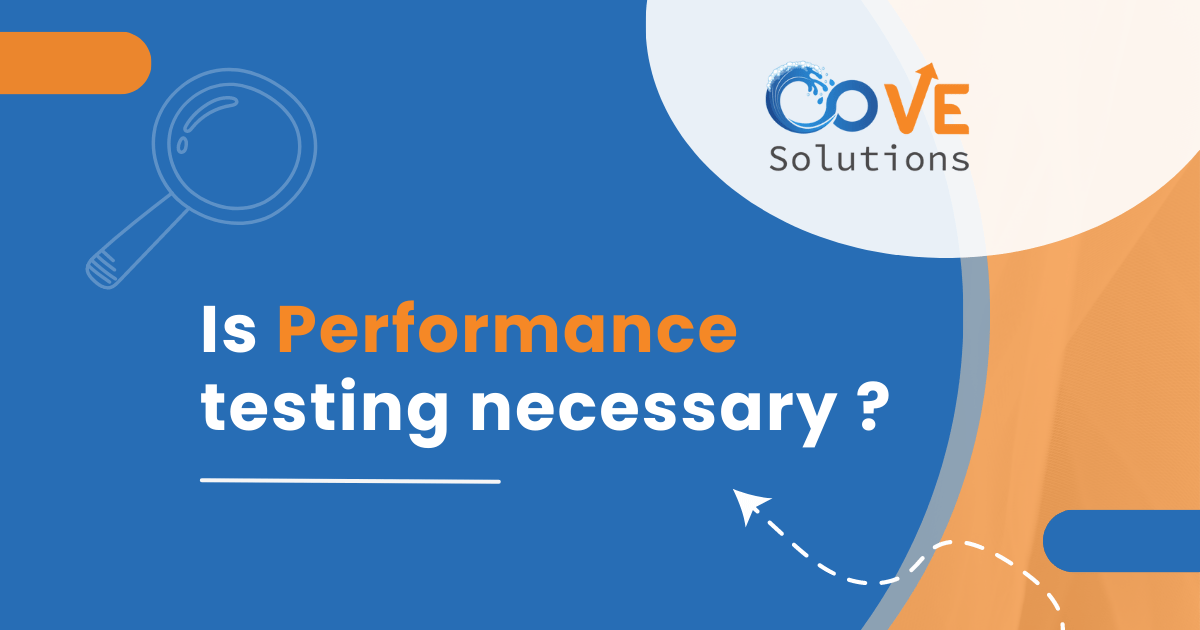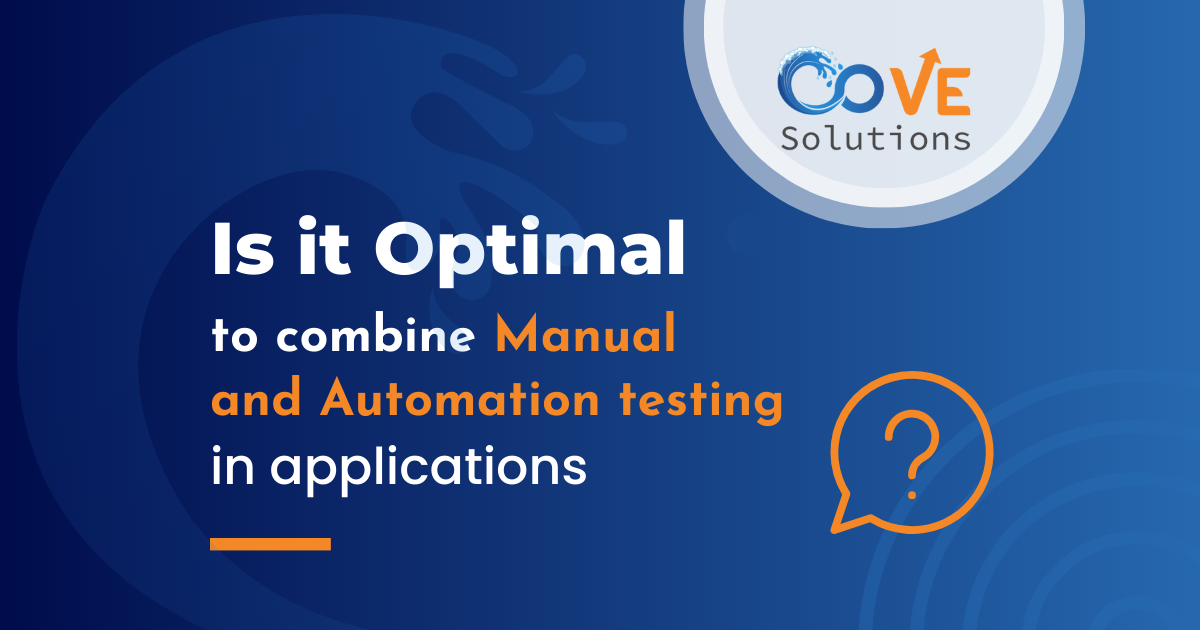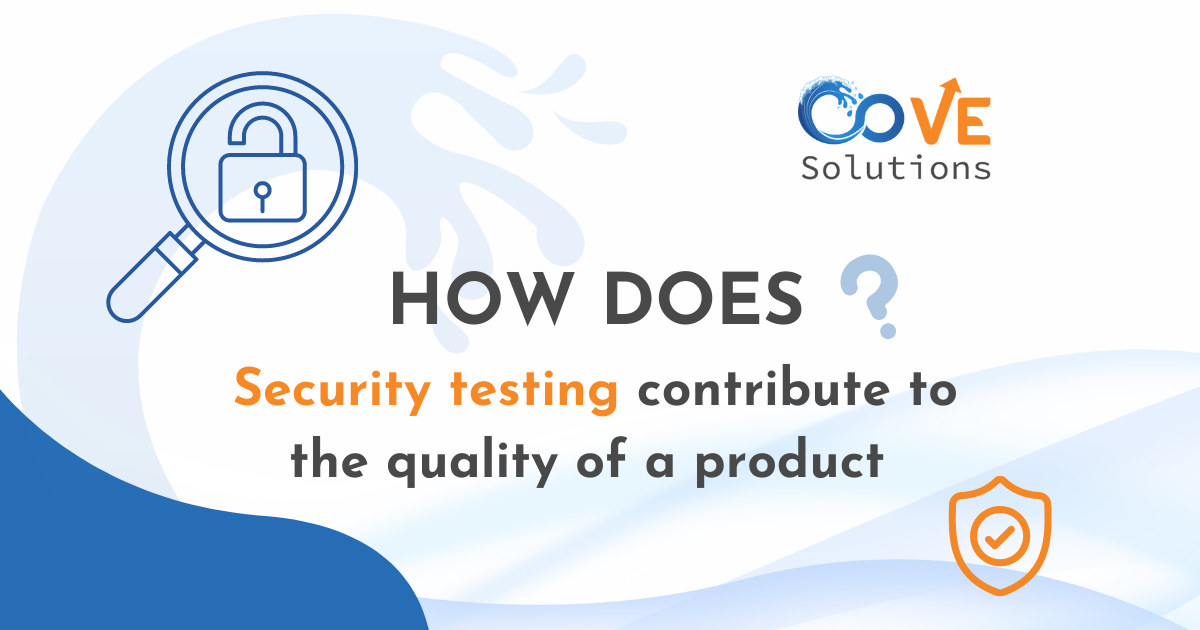At Cove Solutions, Learning involves a comprehensive and continuous approach to training and development that aligns with our organization's goals, values, and culture. We aim to enhance the skills, knowledge, and attitudes of employees to help them perform their roles effectively and achieve personal and organizational objectives.
White Board is an initiative for team members to share their thoughts on their current learning.

By Abirami Soundarya
Senior Automation Test Engineer
Performance testing gives us the information we need and the possibility to have a good quality of our web application prior to releasing it into production.
In the current IT market, the performance of applications plays an important role, and the success of a business depends on the mitigation of the risk of availability, reliability, and stability of a web application, for example. We are trying to achieve particular response time, throughput, and resource utilization for our web application, and performance testing is crucial to ensure this.
If we want to have a good picture of our overall product quality, we need to include performance testing in our testing processes.

By Nivethitha Prabhakaran
Software Test Engineer
Technology has taken significant leaps within the last few years, introducing advancements that have taken us further into the digital age, impacting the software testing industry, and we're seeing advances in machine learning, artificial intelligence, and the neural networks making them possible. These new technologies will change how software is developed and tested like never before.
In COVE, We will look at how we can use data gathered from performance test scenarios during execution to determine what functionality and what concurrent volumes and load profiles we should be testing.
We will use very simple mathematical models to do this in conjunction with a very simple database model with several manual steps to simulate the machine learning.

By Swathi Boominathan
Senior Automation Test Engineer
API testing is one of the most difficult aspects of the software testing and QA testing process since it ensures that our digital lives are becoming more fluid and efficient. While developers tend to test only the features that they are working on, testers are responsible for evaluating both individual functionalities as well as a series or chain of capabilities to see how they interact from beginning to end.
APIs are frequently faster and lend themselves well to automated testing, it’s generally advantageous to use them for test automation. There are many tools that can help you create API Tests and Automated tests such as Postman, Test Project, Rest-Assured, JMeter, etc.

By Nivethitha Prabhakaran
Software Test Engineer
Rigorous testing is the key to successful software development. Ideally, you want all bugs and glitches to be found and fixed before the product is released to market—avoiding the need for costly retrofits and the risk of annoying customers. Automated testing can save time and money, but you can’t underestimate the strength of the human touch in finding errors, especially when it comes to usability testing
for real end-users.
Rigorous testing is essential for software development because it helps to improve the quality of the software and reduce the risks of defects and failures in production. By identifying and fixing issues early in the development process, rigorous testing can save time, resources, and costs in the long run.
That's how we helps to build trust and confidence in the software among
end-users and stakeholders.

By Sivakumar Chellamuthu
Senior Automation Test Engineer
Automation Testing Best Practices & Strategy:
Automation testing is a type of functional testing technique, that uses automated testing tools and frameworks to execute a test or suite of tests. Think of automation testing the contrary of Manual testing. This type of testing demands considerable effort, resources and investment of money. However, it saves you a bunch of time with rigorous and repetitive manual testing.
When to do it?
This is a very interesting question, when do we automate test cases and how do we know we have the right details to start automating?
First of all, identify opportunities within automation. I would suggest as a team to first decide what test cases are worth automating. Once these are selected, you can work on what tools work best for the project to support automated tests. It would be a good practice to then divide the automated testing efforts.
There is no specific time when you can automate tests. I think what’s more important is what team support we have, the tooling and strategies to have a good and complete automation test suite. A test automation strategy supports you in implementing test automation in a way that is repeatable.

By Hemalatha Murugan
Junior QA
Smoke testing is inclusive of a plethora of different functional UI tests for the majority of the graphical UI applications. The ultimate objective is to incorporate the latest and existing User Interface features through different basic tests, which will help in unrevealing the bugs, which might have crept into various core features.
Steps involved in Smoke Testing are Identification of different smoke test cases, Creation of smoke tests, Execution of the smoke tests and Analysis
of the smoke tests.
The smoke tests are executed in this procedure, where for every newly added feature, the scripts are updated. Following the needs, the scripts should be created. Hybrid testing contributes to being the combination of automated and manual testing, which offers assistance in bringing an improvement in the overall performance of smoke testing.

By Balaguru Thangavel
Senior Manual Test Engineer
UAT Testing In Cove, As a UAT tester we map out scenarios based on user expectations and perspective. To focus on how the intended users will use application and what they really expect the application to do.
Performing User Acceptance Testing (UAT) involves several steps that ensure that every change,update, or new feature meets the requirements of the end-user. The process typically involves us doing market research and Knowledge Gathering for Test Planning, UAT Scoping, UAT Design, UAT Execution and
Business Objective Confirmation.
The experienced testers prepare test scenarios and cases and identify suitable participants. The testing takes place in a separate testing environment monitored by a peer. The process includes instructing participants on expectations of the tasks, filling in the test scenario forms, and providing feedback.
By engaging in user acceptance testing, the application’s vendor can make sure that the software does what it’s designed to do for the paying customer and that it functions correctly. If it doesn’t, errors can be corrected and features tweaked to conform to consumer expectations.

By Gayathri Raamkie
Software Test Engineer
Cove Solutions uses automation testing and manual testing to cover the security, performance, and usability aspects of software development. To ensure automation testing doesn’t overlook user experience, and the effectiveness of application design, it is important to incorporate manual testing in the software development process. Automation testers can handle the efficiency and speed aspects of the application while the manual tester works alongside the automated testing process to find issues from a user perspective or discover bugs that occur during unscripted scenarios.
By combining manual and automation testing, organizations can leverage the strengths of both approaches and achieve a more robust and efficient testing strategy. It allows for a balance between human judgment, creativity, and the speed, accuracy, and scalability of automation, ultimately leading to improved software quality.

By Gowri N
QA Trainee
Security testing helps identify vulnerabilities and weaknesses in software applications or systems that could be exploited by malicious attackers. By conducting thorough security testing, organizations can ensure that sensitive information such as customer data, financial records, or personal details remain protected. Data breaches can have severe consequences, including financial loss, damage to reputation, legal issues, and loss of customer trust. Security testing helps uncover vulnerabilities and flaws that could lead to a data breach.
By investing in security testing, organizations can identify vulnerabilities and address them before they are exploited, thus minimizing the financial impact of potential breaches. That's how security testing helps organizations identify and rectify any security gaps that may lead to non-compliance.